
Arundhati Roy opens her book The Ministry of Utmost Happiness with the lines:
"How to tell a shattered story?
By slowly becoming everybody.
No. By slowly becoming everything."
Advait Chandan's Laal Singh Chaddha tries to tell a shattered story by slowly becoming everything. The film is based on Robert Zemeckis's Forrest Gump and has been adapted to an Indian context by Atul Kulkarni. It stars Aamir Khan as the eponymous Laal Singh Chaddha and tells his personal story juxtaposed with the story of contemporary political India. Laal's story, like other stories, is filled with characters. His mother Mrs. Chaddha (Mona Singh), his childhood friend Rupa D'souza (Kareena Kapoor), and his other friends, Bala (Naga Chaitanya) and Mohammad Paaji (Manav Vij), are the pivotal people who shape the narrative of his life.

Laal Singh Chaddha is an ode to stories and storytelling. There are various levels of storytelling in the film. First, there is the story of Laal. In the film's initial moments, a lady comes and sits opposite Laal on the train. He tries to be friendly with her, but she remains busy with her cell phone. He introduces himself and offers her gol gappe. He then makes some weird sounds. She is a bit annoyed by him and looks around. No one else seems to be bothered. He then compliments her shoes and begins sharing his story. He talks about everything from his childhood to adulthood. The film keeps moving between the past and the present throughout its narrative, giving us glimpses of Laal's life. And whenever it comes back to the present, more fellow passengers gather around him, listening to the twists and turns in his story. Majrooh Sultanpuri wrote, "Main akela hi chala tha jaanab-e-manzil magar, log saath aate gaye aur kaaravaan banta gaya." I set off alone toward my goal, but people came along, and it began to turn into a caravan. This couplet perfectly describes the story of Laal's journey, both on the train and in his life. He keeps meeting more people as he chugs along in life, like how more people start gathering around him on the train. He starts with his mother, finds friendship and love in Rupa, and then further cements close bonds with Bala and Mohammad Paaji. Like the fellow passengers on the train, these people leave him at different points, getting down at their stop until Laal reaches the station where it is time for him to leave them. It is then entirely befitting that the film is set on a train. The journey of the train mimics the journey of his life. The same phenomenon is again observed when he starts running in the end. He starts alone, but then other people start running together with him. He says initially, a single man started running with him, then a few people joined him, then a few more joined him, much like the people in his life.

Intertwined with the story of Laal Singh Chaddha is the story of India itself. While talking about his story, Laal narrates the pivotal moments in the story of India. Epochal events, such as the Emergency, the Operation Blue Star, the anti-Sikh riots, the Mandal protests, the Rath Yatra, the Kargil War, the India Against Corruption movement, and the rise of Narendra Modi—all make an appearance. The conspicuous absence of the Gujarat riots is also a story of present-day India. Laal is personally impacted by some of these events. Like how his mother had to cut his hair to protect him from the mob. He personally impacted some of these events. Like how he taught Shah Rukh Khan his signature dance step. And he is only a bystander in some of these events. Like how he watches Lal Krishna Advani's rath yatra from the sidelines. The most engaging parts of the story are the ones where Laal plays a personal role in the story of political India. As they say, personal is political, and political is personal. The people that Laal meets are also a representation of Indians. Laal is a Sikh. He is in love with a half-Christian. His friend is a Hindu from the South. He saves the life of a Muslim. It is only befitting then his son is named Aman, meaning peace. Even the daily quote on the board in Laal's class in his school reads, "Unity in Diversity."

The third level of storytelling in Laal Singh Chaddha is how the story has been told. The film talks about the randomness of the stories of our lives; however, its own storytelling follows a well-crafted pattern. There are continuous throwbacks and flashbacks in its screenplay. There are recurring events at different stages of Laal's life. The same events keep occurring again and again. It is clear here that the storytellers of Laal Singh Chaddha have invested a lot of thought in writing his story.
- Early in the film, a few young kids bully Laal while he is playing with Rupa. She then asks him to run away from them. "Bhaag Laal Bhaag," she tells him. Laal sprints across the field; magically, his paraplegic legs gain strength. He does not need the leg supporters anymore. In college, a similar scene happens when college kids chase him in their car while Laal runs as fast as he can. When he is at war in Kargil, his friend Bala asks Laal to run for his life, and he starts running. Years later, an injured Laal visits Delhi after his stint in the army. During a chance encounter, he sees Rupa in a car and runs after her, and as it happened earlier, his leg gains strength, and he does not need a crutch anymore.
- When Laal joins the school, the other students don't accept him easily. He looks for a seat in the class, but the kids refuse to let him sit next to them. Then he sees Rupa, who offers the seat next to her, beginning their lifelong friendship. A similar situation occurs again when Laal joins the army. He travels via bus, and other cadets refuse to offer him a seat. It is only Bala who offers the seat next to him and thereby begins a lifelong friendship, replicating the scene from school.
- Rupa used to love having gol gappes. When they are in college, she asks Laal to bring some for her, which he does. However, she is annoyed that he did not get the spicy water in a separate tumbler. In the film's opening moments, Laal eats a few gol gappas and puts spicy water in them from a bottle. It all makes sense because Laal was going on a journey to meet Rupa. He brought gol gappas for her and remembered to carry the water separately this time. The film again brings in a throwback element.
- When Rupa and Laal are in school, they sit together for a class photograph. All the children face the camera. Laal, however, has his eyes only on Rupa. Later, the exact moment is recreated when Laal and Rupa spend a night out roaming the streets of Delhi. When a photograph is clicked, his eyes are only focused on Rupa.
- In college, Rupa starts seeing other men. One of them tries to be forcefully physical with her, even though she is not comfortable. Laal is furious at seeing her discomfort. He comes charging at the guy and hits him. The same scene is repeated at least twice again. After Rupa moves to Bombay, she is charged in a case for indecent exposure. A few men protest against her. Laal assaults one of the men shouting slogans against Rupa. A few years later, after taking his leave from the army, Laal lands in Delhi. He sees Rupa, follows her car, and sees the gangster Abbas Haaji (Harry Parmar) slapping her in front of people. Laal again charges at the man where he beats him blue, reminiscent of the earlier moment from the college.
- When they were kids, Laal called Rupa a magician as she did a magic trick where she caught a plane from the sky and put it in her hands. This plane also keeps appearing in the film repeatedly as a reminder of the magical moment. When they are in Bombay, a plane flies by, reminding them of their magical moment from childhood. And it is this magical moment that actually saves Rupa's life. After facing a barrage of abuse from her shady lover, Rupa decides to take her life by jumping from a high-rise hotel in Dubai. However, a plane passes by at that moment, reminding her of Laal. She remembers his words and decides not to end her life.
- The question of marriage is another recurring plot in Laal Singh Chaddha. Since childhood, Laal keeps asking Rupa to marry him. "Mere saath vyaah karegi tu?" he asks her while they sit outside looking at the sky when they were kids. Rupa does not answer, and the fireworks go off. The scene is repeated when they grow up into adults, but each time, she refuses or remains non-committal. It is only near the end, when they are together, that it pops up again, but this time, it is Rupa who asks Laal to marry her. The scene is also designed similarly, where they always sit together in the same pose.
- Laal and his mother get stuck in the anti-Sikh riots in Delhi. Laal's mother cuts his hair to protect him from the mob. She prays to Guru Nanak and apologizes for taking the step. Laal grows up as an atheist. When he is in the army, Laal sees a man tying his turban. The same scene is repeated in the end when Laal embraces the turban, and Ik Onkaar plays in the background. The moving scene closes the earlier one where his hair is cut by his mother.
- The stories of the great-grandfathers of Laal and Bala follow the same template. They are shown similarly. Laal's grandfathers' stories are related to war, while Bala's grandfathers' stories are related to the innerwear business.
- The tree outside Laal's house becomes another motif in the life of Laal and Rupa. It was the place where they met as kids. After they got married, they played with their son under the same tree. Rupa is also buried under the same tree after her death.
- When riots break out in the country, Laal's mother tells him that malaria has spread, which becomes another recurring theme of the film.
- The feelings for the people Laal met in his life also had a similar structure. For instance, at one point, he says that after his mother, Rupa, and Bala, he also started missing Mohammad Paaji. When Rupa goes away, he writes letters to her. When Mohammad Paaji leaves, he says he will write letters to him. These people also keep leaving him. Bala dies in the war; his mother departs the world; Rupa leaves for heaven; Mohammad Paaji goes back to his country.
Thus, we see there is a discernible pattern in the storytelling of Laal Singh Chaddha. I do not remember much of Forrest Gump, so, likely, these were also present in that film. Laal Singh Chaddha further adds more elements related to stories. At one stage, an old lady, played by the lovely Kamini Kaushal, tells Laal he is a wonderful storyteller. "Badi dilchasp kahani hai tumhari, beta, aur tum sunate bhi kitna accha ho." The film's most poignant scene also talks about the stories of our lives. After Rupa's death, Laal visits her grave at the burial site and talks to her about stories. He says that his mother told him everything in life is pre-destined and written from before, although he does not know who wrote it. He wonders if the things that happen to us are under our control or if we are just drifting along. Perhaps, it is a bit of both, he concludes. Even the song Kahani mentions a similar feeling. Kya pata hum mein hai kahani, ya hai kahani me hum. Are we the story, or is the story in us? Stories are everywhere in Laal Singh Chaddha.
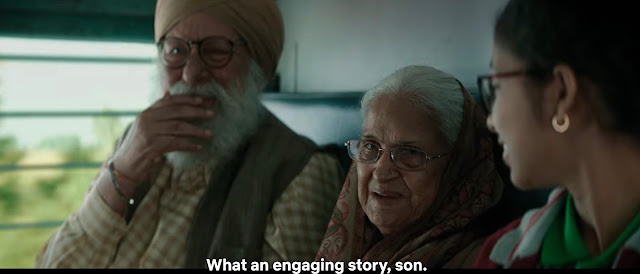

The film starts beautifully. It loses track in the middle. The events related to the Kargil War and the Mohammad Paaji do not really work. Aamir Khan also does a lot of over-the-top acting in the middle, though he redeems himself slightly in the end. The last forty minutes are simply beautiful. A toned-down Aamir makes these moments memorable. However, it is Kareena Kapoor as Rupa who carries the film. She, like always, is terrific, especially in the emotional scenes. Mona Singh as Laal's mother is wonderful. A special mention to Ahmad Ibn Umar, who plays the young Laal with so much grace that one cannot help but fall in love with him.

Advait Chandan, who made his debut with Secret Superstar, shows strength in scenes with the kids. In his first film, there was Chintan (Tirth Sharma), a faithful ally of Insia (Zaira Wasim), who kept all her secrets and literally helped her cross all the barriers (such as the locked gate) on her path to success. There is a beautiful moment when Insia writes her email password in his hands. He blushed because she chose his name as her password. In Laal Singh Chaddha, when asked to solve a puzzle, Laal writes Rupa as the answer to all questions. It is one of the loveliest and cutest moments in the film.

The film has some gorgeous cinematography by Satyajit Pande. The best bits are the ones in Punjab. Music by Pritam and lyrics by Amitabh Bhattacharya are among the finest this year. I loved Kahani and Tur Kalleyan, which are simply beautiful though I was left a bit confused by some parts of the lyrics of Tur Kalleyan, which did not really suit the film's story. Tur Kalleyan appears in the end when Laal starts running. He then never stopped and went on a tour of India, covering its four corners. One day, he simply stops running and decides to go home. The run was a representation of the randomness in life. People assigned motives to his running, but he was simply moving along. Its lyrics talk about how we will meet people. Hai zindagi ke kisse kayi. Some people will stay with us for a long. Milte ho saare kisson me tum. But at the end of the day, life is a journey we traverse alone. Tur kalleyan. Walk alone. I felt the parts that did not fit the story were the ones where the song talks about letting go of the lover and setting them free.



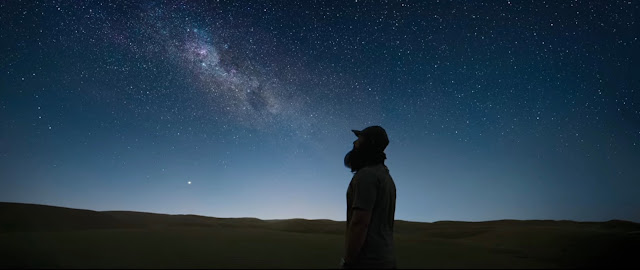
The names of the film's principal characters also have a connection. Bala's family was into the underwear business. His grandparents used to make vests. Laal's last name is Chaddha which sounds similar to another term in Hindi that means underwear. At one point, even Bala refers to them as chaddi and baniyaan. Then, Laal decides to make Bala's dream of opening an innerwear business come true. He names it after Rupa, which is also the name of one of the largest knitwear brands in India.

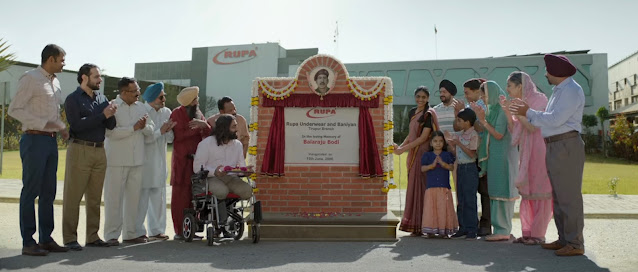
Laal Singh Chaddha's most fascinating character for me is Rupa. She and Laal are like aloo and gobhi. Her initial years were spent in a household where her mother was a victim of domestic violence. She ultimately lost her mother, but her story shows how trauma can impact someone all their life. Years later, when she saw another woman facing domestic violence, it triggered her. Her trauma was also why she wanted to become rich and famous. She then took the wrong steps in her quest to fulfill her ambitions. Like Sona Mishra (Konkona Sensharma) from Zoya Akhtar's Luck By Chance and Mahi (Kareena Kapoor) from Madhur Bhandarkar's Heroine, she becomes a consort of a small-time producer Abbas Hajji. She only got small parts in films, such as a background dancer in David Dhawan's Bade Miyan Chote Miyan. Ultimately, she becomes entangled in the underworld as Abbas becomes Dawood Ibrahim's henchman. Her story is inspired by Monica Bedi, the girlfriend of Abu Salem. Laal, however, never forgot her. He was there at every step to protect her. She remained with him even if she was not present physically with him. At one point, Laal prays to God to make Rupa richa. And, as they say, being in someone's prayers is the purest form of love. And, like Laal, Rupa was also running—running from her past. She traveled all over but ultimately realized her home was where she started, the one with Laal. There is a lovely moment when Rupa returns to Laal's life. They both live together for a few days and spend time dancing together. Laal remarks that he had not been happier in life and felt like a family together. He was the father, and she was the mother. It seemed to be a curious choice of words. He does not refer to them as lovers but as parents, which adds to his innocent ways of thinking about life. But it also gave a sign of their future role in the film when they actually become parents.

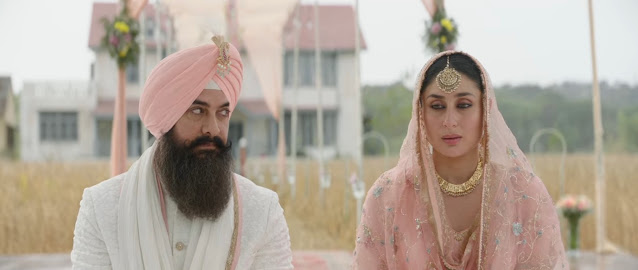
As Laal Singh Chaddha is inspired by stories, it concludes using another common storytelling device—the circular narrative—where it ends at the same place where the story originated. The film opens with a feather that goes through a journey, telling a story of its own. It traverses a meandering path and ultimately lands at Laal's feet. The same feather appears again in the film's concluding moments. It falls from Laal's diary and drifts again to a new destination. The story of the feather is the story of Laal Singh Chaddha. Like he told Rupa, "Jo bhi honda hai woh hum karde hai ya hava wich aiveyi ud de phir de hain". Life also comes full circle for Laal when he drops his own son at the same school he had studied and imparted the same message his mother gave him—to work harder than everyone else. Laal keeps hoping his son will also ask him to wait like he had asked his mother, but he does not. He, however, decides to sit on the bench, reminiscing about his Rupa and wondering about his story if yeh hatheli ki lakeeron mein, likhi saari hai, ya zindagi humare iraadon ki maari hai.

Trivia:
1. [Corrected] Ik Onkaar from Rakeysh Omprakash Mehra's Rang De Basanti is used in Laal Singh Chaddha.
2. I once received a message on Twitter from Advait Chandan. :)


Dialogue of the Day:
"Maa kehti thi zindagi golgappe ki tarah hoti hai, pet bhale bharjawe, mann nahi bharta."
—Laal, Laal Singh Chaddha




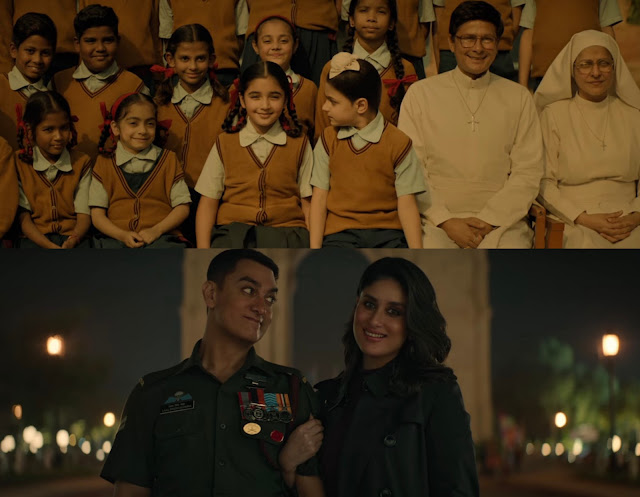








It is the same Ik Onkar from Rang De Basanti that is used in this film.
ReplyDeleteLovely read Pankaj 😊
Oh, I had no idea. I thought it is a new one. Thank you so much for clarifying and reading, Bhowmik. :)
DeleteWhat a lovely post, Pankaj..... Can you do analysis on Chup?
ReplyDeleteThanks a lot, Monika. Yes, I will try to write about it when it releases on streaming. :)
Delete